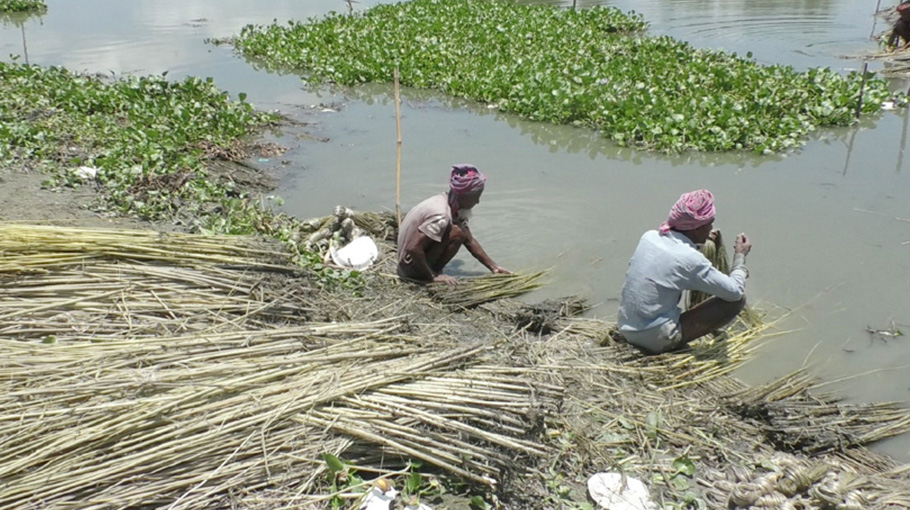Dinajpur farmers longing for monsoon rain

Due to the lack of rain in Dinajpur, the farmers are not getting water for jute, and they fear that the yield of jute will decrease due to drought. Due to the water crisis during the full monsoon season, jute cutting cannot be started at full speed. Due to the lack of sufficient water in the reservoir, the jute is drying up.
It is known that canals, ponds and ponds are drying up due to intense sun and heat even in Ashad-Shravan. Jute should be harvested within 100 to 120 days after sowing. Jute cutting has to start at the end of Ashad month. But this time the farmers are not able to cut jute due to lack of rain.
Again, as the water level is falling rapidly, the reservoir does not have the minimum amount of water required to raise jute. The farmers who cut the jute and left it to rot are also in danger.
Meanwhile, if the jute is not cut on time, there is a risk of the jute fibers becoming hard and dry. If the cost of jute production and domestication is met, then if it cannot be raised due to lack of water, then the farmer will have to sit on the road under the pressure of loss. Meanwhile, the color of jute does not come properly due to lack of water during cultivation and awakening. Farmers fear that the actual price of jute will be different from this.
Talked about this with Dhulu Sharma, a jute grower of Garpara area of Dinajpur Khansama upazila. He said that the river channels have also dried up. Although it is the right time to cut jute, they are unable to cut it because there is no water in the canals. Moner Hossain of the same village said, 10 days ago I woke up jute; But now because there is no water, the raised jute are drying up and it will not be possible to remove the fiber from them, he said. Because of this, he is unable to remove the fibers of jute.
Manu Miah, a farmer of Khansama upazila, said that I have grown jute on 8 bigha of land and cannot harvest jute from the land as there is no system for awakening. In the meantime, there is a threat of flood like a thorn wound on the hill. He is also worried about this.
Aminul Islam of Boali village of Sadar Upazila said that he went 4 kilometers away and planted jute in the Alai river. But even there the water is decreasing. If there is no rain it will be difficult to release jute.
Majnu of the same village said that the jute is turning red due to the intense heat of the sun and is harming the cows and goats. He said that due to lack of sufficient water, the jute grown is turning black and it will not be possible to get the price of jute. Zainal of Pakerhat village said that jute is being raised through water irrigation in sallow machines. It is costing a lot, which is why the losses have to be calculated.
Regarding the matter, Deputy Assistant Agriculture Officer of Dinajpur Agriculture Extension Department Md. Nazrul Islam (attached) said that jute cultivation has been done on 27 thousand 780 hectares of land in the district this season. Farmers in the grazing and flood-affected areas have started cutting jute but are faced with rotting jute due to the rapid decrease in water in the river canals. Apart from this, Mainland farmers are raising jute by renting ponds, he said. Again, many jute farmers are waking up by irrigating water in ponds.
He said that due to the adverse effects of the climate, the farmers will suffer financially due to the lack of water in canals, ponds and ponds in Asadha-Shravan.




